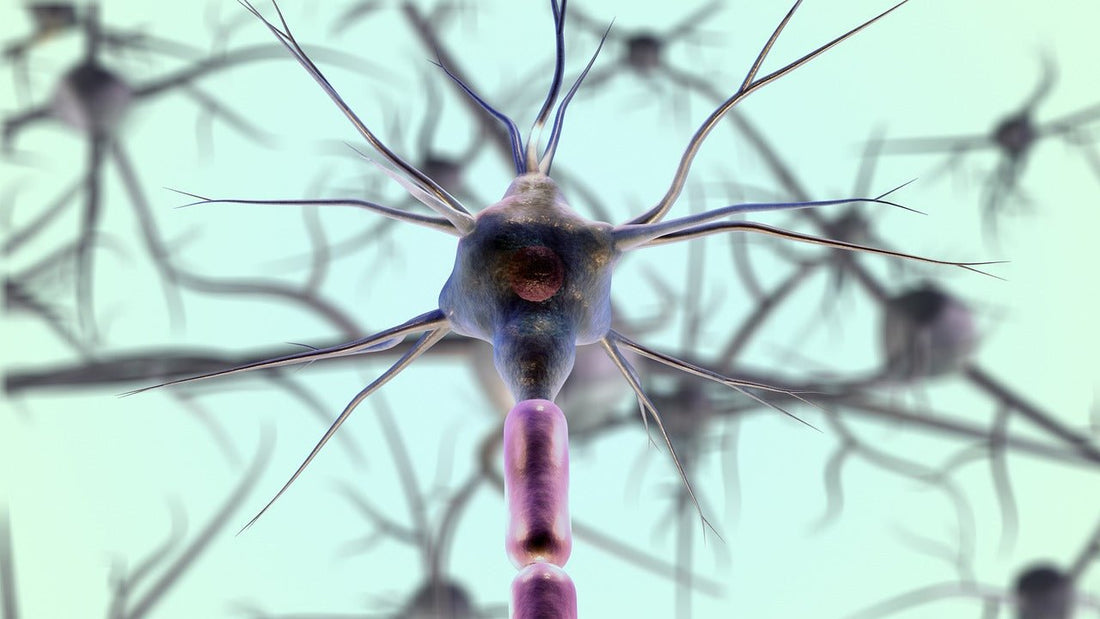
Easing Neuropathy Symptoms with Light Therapy: A Review of Photobiomodulation Research
Share
Peripheral neuropathy is a condition that affects millions of people worldwide, causing pain, numbness, and weakness due to nerve damage and dysfunction. Photobiomodulation, commonly known as light therapy, has shown promise in alleviating neuropathy symptoms and improving nerve function. This article will explore the science behind light therapy for neuropathy and discuss five influential research papers that have shaped our understanding of its effectiveness.
How Light Therapy Supports Neuropathy Management
Light therapy uses specific wavelengths of light, typically in the red and near-infrared spectrum, to stimulate cellular processes within the body. When the skin absorbs light at these wavelengths, it triggers a series of events at the cellular level that enhance the body's natural healing processes. Key mechanisms involved in neuropathy management through light therapy include:
1. Nerve cell regeneration: Light therapy promotes the regeneration of nerve cells, improving nerve function and reducing neuropathic pain.
2. Reduced inflammation: Light therapy can decrease the production of pro-inflammatory cytokines, thereby reducing inflammation and alleviating neuropathy symptoms.
3. Improved blood circulation: Light therapy enhances blood flow and circulation, providing tissues with more oxygen and nutrients while removing waste products. This improved circulation supports nerve cell regeneration and further reduces inflammation.
4. Pain relief: Light therapy can modulate pain signals in the nervous system, leading to a reduction in perceived pain.
Five Influential Research Papers on Light Therapy and Neuropathy
1. Leonard, D. R., Farooqi, M. H., & Myers, S. (2004). Restoration of sensation, reduced pain, and improved balance in subjects with diabetic peripheral neuropathy: a double-blind, randomized, placebo-controlled study with monochromatic near-infrared treatment. Diabetes Care, 27(1), 168-172.
This double-blind, randomized, placebo-controlled study investigated the effects of monochromatic near-infrared treatment on sensation, pain, and balance in subjects with diabetic peripheral neuropathy. The results demonstrated significant improvements in these parameters, suggesting the potential benefits of light therapy for neuropathy management.
2. Kochman, A. B., Carnegie, D. H., & Burke, T. J. (2002). Symptomatic reversal of peripheral neuropathy in patients with diabetes. Journal of the American Podiatric Medical Association, 92(3), 125-130.
In this study, the authors examined the effects of light therapy on symptomatic reversal of peripheral neuropathy in patients with diabetes. The results showed that light therapy significantly improved sensation and reduced pain, highlighting its potential as a valuable treatment option for diabetic neuropathy.
3. Quirk, B. J., Torbey, M., Buchmann, E., Verma, S., & Whelan, H. T. (2012). Near-infrared photobiomodulation in an animal model of traumatic brain injury: improvements at the behavioral and biochemical levels. Photomedicine and Laser Surgery, 30(9), 523-529.
This animal study investigated the effects of near-infrared photobiomodulation on traumatic brain injury, which can cause neuropathy. The researchers found that light therapy improved both behavioral and biochemical outcomes, suggesting that light therapy may also benefit individuals with neuropathy resulting from brain injuries.
4. Cassano, P., Petrie, S. R., Hamblin, M. R., Henderson, T. A., & Iosifescu, D. V. (2016). Review of transcranial photobiomodulation for major depressive disorder: targeting brain metabolism, inflammation, oxidative stress, and neurogenesis. Neurophotonics, 3(3), 031404.
Although this review article focuses on the use of transcranial photobiomodulation for major depressive disorder, it discusses the potential of light therapy in targeting brain metabolism, inflammation, oxidative stress, and neurogenesis, which is critically relevant as the brain also consists of neural cells. These mechanisms are also relevant for neuropathy management, as they can contribute to nerve cell regeneration, reduced inflammation, and pain relief.
5. Rosso MPO, Buchaim DV, Kawano N, Furlanette G, Pomini KT, Buchaim RL. Photobiomodulation Therapy (PBMT) in Peripheral Nerve Regeneration: A Systematic Review. Bioengineering (Basel). 2018 Jun 9;5(2):44. doi: 10.3390/bioengineering5020044
This systematic review looks at research on peripheral nerve regeneration, and concludes that photobiomodulation is a useful method for a variety of reasons. Many of the studies look at biomarkers of inflammation, such as pro- and anti-inflammatory cytokines. Results where neural growth factor and neurotrophic factor expression are increased are discussed.
Conclusion
The research papers discussed in this article provide strong evidence for the effectiveness of light therapy in managing neuropathy symptoms, including pain, numbness, and weakness. Through its ability to promote nerve cell regeneration, reduce inflammation, improve blood circulation, and modulate pain signals, light therapy offers a promising non-invasive, and drug-free treatment option for neuropathy management.
As our understanding of photobiomodulation and its potential applications in neuropathy treatment continues to grow, healthcare professionals and individuals with neuropathy can consider integrating light therapy into their treatment plans to support symptom management and improve the overall quality of life.
For more on the science behind light therapy read:
